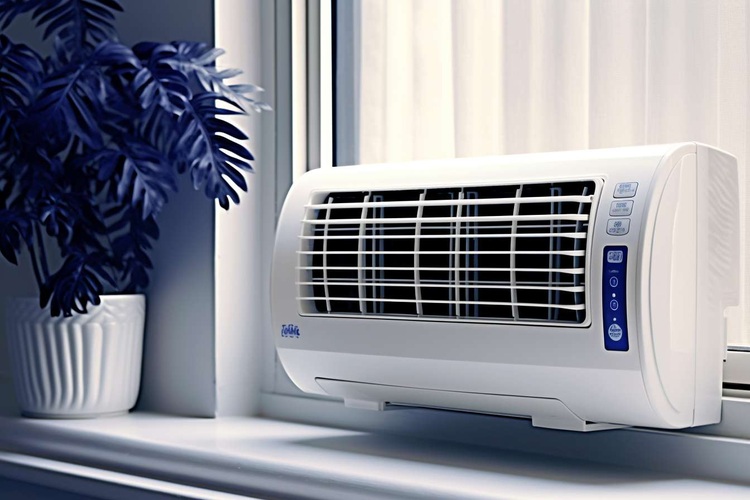Cooling without drilling: the perfect solution for any home
Not every living space allows for permanent installations or structural modifications. Whether you’re renting, living in a historic building, or simply looking for a flexible alternative, portable air conditioners without external units offer a practical option. They require no drilling, wall mounting, or special permits—just a standard power outlet and a window for ventilation. This makes them especially useful in spaces where traditional systems can’t be installed. With compact design and mobility, they can be moved between rooms as needed, making them suitable for varied living arrangements or seasonal use.

How can a portable AC be installed in under 5 minutes?
Installing a portable air conditioner without external units in a rented apartment is a breeze, often taking less than 5 minutes. First, choose a suitable location near a window and power outlet. Unbox the unit and attach the exhaust hose to the back of the air conditioner. Next, extend the window kit (usually included with the unit) to fit your window’s width, and secure it in place. Position the exhaust hose’s other end into the window kit opening. Finally, plug in the unit, and you’re ready to start cooling. This simple process requires no tools, drilling, or permanent alterations to your living space, making it ideal for renters or those seeking a flexible cooling solution.
Why are mobile AC units perfect for historic buildings?
Mobile air conditioning units are particularly well-suited for historic buildings or homes where traditional installation isn’t allowed. Here are the top three reasons:
-
Preservation of architectural integrity: Historic buildings often have strict regulations against altering their structure or appearance. Portable AC units require no permanent modifications, ensuring the building’s historical value remains intact.
-
Reversibility: Unlike built-in systems, mobile units can be easily removed without leaving any trace, which is crucial for maintaining the original state of protected structures.
-
Flexibility and adaptability: Historic buildings may have unique layouts or thermal characteristics. Mobile AC units can be moved and adjusted as needed to provide optimal cooling in different areas, adapting to the specific needs of these older structures.
How do wall-mounted and portable ACs compare in cost?
When comparing wall-mounted air conditioners with no-drill portable units in terms of cost, several factors come into play. Initial purchase price, installation expenses, and long-term energy efficiency all contribute to the overall cost comparison.
Wall-mounted units typically have a higher upfront cost due to the need for professional installation. This installation often involves electrical work, potential structural modifications, and sometimes permits, all of which add to the initial expense. However, these systems are generally more energy-efficient in the long run, which can lead to lower electricity bills over time.
Portable air conditioners, on the other hand, have a lower initial cost. They require no professional installation, eliminating those associated fees. However, they may be less energy-efficient compared to wall-mounted units, potentially resulting in higher energy costs over time. The trade-off is in their flexibility and the absence of installation expenses.
What are the key differences between wall-mounted and portable ACs?
When comparing wall-mounted air conditioners with portable units that don’t require drilling, several key differences emerge:
-
Installation: Wall-mounted units require permanent installation, often necessitating professional help and possible structural changes. Portable units can be set up quickly without any modifications to the space.
-
Mobility: Portable ACs can be moved from room to room or even to different properties, while wall-mounted units are fixed in one location.
-
Aesthetics: Wall-mounted units are generally sleeker and less obtrusive, blending better with room decor. Portable units are more visible and may take up floor space.
-
Cooling capacity: Wall-mounted units often have higher cooling capacities and can cool larger areas more effectively. Portable units are typically better suited for smaller spaces or spot cooling.
-
Noise level: Wall-mounted units usually operate more quietly, with the compressor located outside. Portable units have all components in one unit, which can result in more noise inside the room.
What innovative features do modern portable ACs offer?
Modern portable air conditioners have come a long way in terms of features and efficiency. Many now offer smart capabilities, allowing users to control the unit via smartphone apps or integrate them with home automation systems. Some models include air purification features, helping to remove allergens and pollutants from the air while cooling. Dual-hose systems have improved efficiency by separating the intake and exhaust air, reducing the “negative pressure” effect that can draw warm air back into the room. Additionally, some portable ACs now come with heat pump technology, allowing them to function as both coolers and heaters, providing year-round climate control in a single unit.
How do portable and wall-mounted ACs compare in real-world scenarios?
To provide a clearer picture of how portable and wall-mounted air conditioners compare in real-world scenarios, let’s look at some specific models and their features:
| AC Type | Model | Cooling Capacity | Energy Efficiency | Estimated Cost | Key Features |
|---|---|---|---|---|---|
| Portable | Whynter ARC-14S | 14,000 BTU | EER: 11.2 | $500 - $600 | Dual hose, self-evaporative system |
| Portable | LG LP1419IVSM | 14,000 BTU | DOE: 10.0 | $600 - $700 | Inverter compressor, smart ThinQ technology |
| Wall-Mounted | Mitsubishi MSZ-GL15NA | 15,000 BTU | SEER: 21.6 | $1000 - $1500 (plus installation) | Whisper-quiet operation, energy-saving mode |
| Wall-Mounted | Daikin FTXS15LVJU | 15,000 BTU | SEER: 20 | $1200 - $1700 (plus installation) | Intelligent Eye sensor, wireless control |
Prices, rates, or cost estimates mentioned in this article are based on the latest available information but may change over time. Independent research is advised before making financial decisions.
This comparison illustrates that while portable units have a lower upfront cost, wall-mounted units generally offer higher energy efficiency ratings, which can lead to long-term savings on energy bills. The choice between the two often depends on individual needs, such as the permanence of your living situation, budget constraints, and specific cooling requirements.
In conclusion, both portable and wall-mounted air conditioners offer unique advantages. Portable units provide flexibility and ease of installation, making them ideal for renters or those who need a versatile cooling solution. Wall-mounted units, while requiring more initial investment and permanent installation, often provide more efficient cooling for larger spaces and can be a more integrated part of a home’s HVAC system. The best choice depends on your specific circumstances, including your living situation, budget, and cooling needs.
The shared information of this article is up-to-date as of the publishing date. For more up-to-date information, please conduct your own research.




